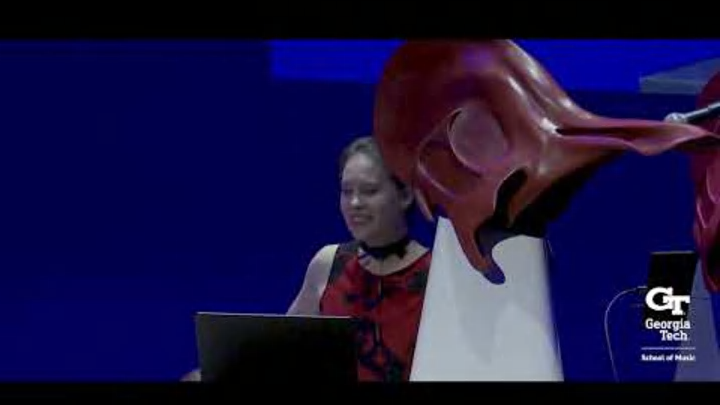Dinosaur movies like Jurassic Park convinced the public that the prehistoric creatures roared. Now, two musicians are challenging the assumption using 3D-printed dinosaur skulls.
Dubbed Dinosaur Choir, the craniums in question use fossil evidence to recreate the vocalizations of species that haven’t been heard in millions of years. You don’t need to be a musician to play the unique instrument. According to WIRED, all you have to do is stand before a camera and blow into a microphone. Doing so activates a vocal-organ-like structure, which forces the sound vibrations through the 3D model’s nasal passage and skull. Depending on the player’s mouth shape and the power of their blow, the sounds will change—but regardless, they sound much closer to a mournful cry than the ferocious roars made famous on film.
Dinosaur Choir was recently recognized at Georgia Tech’s 2025Guthman Musical Instrument Competition. You can see the dino skull instrument in action in the video above.
Creators Courtney Brow and Cezary Gajewski are currently focusing on Lambeosaurine hadrosaurs, a group of crested, duck-billed dinosaurs that lived during the Late Cretaceous Period. More specifically, the Dinosaur Choir replicates the skulls of Corythosaurus. Some scientists speculate that the dinosaur’s crest and nasal cavities functioned as sound resonators that helped them vocalize. When the species was alive over 75 million years ago, they grew to be about 26 to 30 feet long. The models for Dinosaur Choir are about 2.95 feet long and 2.46 feet high.
Brow came up with the idea for the project in 2011 while visiting a dinosaur museum in New Mexico. There she learned about another crested dinosaur called Parasaurolophus, which paleontologists believe also used sound resonation. Inspired by the creature’s ability, the artist got to work on creating interactive dinosaur sounds right away. Rawr! A Study in Sonic Skulls was the first project, and the Dinosaur Choir is its continuation. Brow collaborated with Gajewski and paleontologist Thomas Dudgeon, who provided computational tomography (CT) scans, segmentations, and 3D models of fossils in 2021 to help her bring her own models to life.
“Playing” the 3D-printed head of a T. rex presents more of a challenge. Brow told WIRED that recreating the animal’s noggin would be tricky because “the skull and sinuses are so open,” which requires more speculation. However, the musician isn't opposed to the idea.
If you would like to try out Dinosaur Choir for yourself, you can play around with the online corythosaurus syrinx from your computer.
Read More About Dinosaurs:
